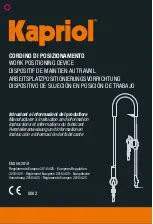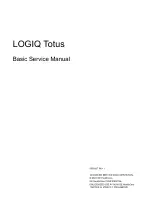
with KM did not show any formation of lipid droplets in the
cytosol (Figure 5c). The cells exhibited high expression levels
of
c-Myc
and
Klf4
, and low or unchanged expression levels of
adipogenic genes such as
C/Ebp
α
,
Fas
,
Ppar
γ
2
and
Fabp4
at day 8 (Figure 5d). Interestingly, the expression of all
adipogenic genes in these MSCs decreased at day 8. These
results showed that these cells were not able to differentiate
into adipocytes via KM. The expression levels of a set of TFs
in bone marrow-derived mesenchymal cell lines, including
KUSA-A1, KUM5 and KUM9 cells, were determined relative
to the expression of
Gapdh
from cardiac tissues. All TFs
related to adipogenesis did not increase following exogenous
KM gene transfer, suggesting that the induction of adipogen-
esis by KM gene transfer could be specific to CMPs.
Klf4
and
c-Myc
were induced by ischemia reperfusion
injury
in vitro
and
in vivo
.
CMPs were exposed to IRI model
culture conditions
in vitro
(Figure 6a). CMPs immediately
detached from the tissue culture dish under hypoxic condi-
tions, and detached CMPs re-attached to the culture dish
under normoxic conditions (Figure 6b). CMPs expressed the
hypoxia-induced gene
Hif1
α
at 3 h, and expression returned
to baseline levels at 24 h (Supplementary Figure 1), indicat-
ing that the culture system could successfully mimic IRI. The
expression level of
Klf4
increased at 3 h after hypoxia,
remained high until 6 h under normoxia, then returned to the
baseline level, whereas the expression of
c-Myc
increased
sharply just after normoxic conditions were applied. HIF1, the
abundance of which indicates the extent of the ischemic
insult, is upregulated by the inhibition of proteolysis in cardiac
IRI,
and its abundance can be measured by western
blotting. To assess the link between a set of TFs and IRI using
a consistent methodological approach, qRT-PCR was cho-
sen. As a surrogate marker for IRI, instead of
Hif-1
, the gene
expression levels of
c-Fos
and
c-Jun
, the protein products of
which form the TF AP1, were examined. The expression of
both
c-Fos
and
c-Jun
drastically and temporarily increased
just after exposure to normoxic conditions.
Moreover, we determined that KM was involved in
in vivo
murine cardiac IRI (Figures 6d
f). Injured murine ventricles
acutely and temporarily expressed
Klf4
and
c-Myc
in IRI,
similar to the pattern observed for
in vitro
IRI. The expression
levels of both
c-Fos
and
c-Jun
were transiently increased 1 h
after ischemia, and increased after reperfusion, indicating that
Klf4
might be involved in the cellular response following the
insult as early as
c-Fos
and
c-Jun
. Platelet-derived growth
factor, which is involved in cardiac IRI, induces
c-Myc
expression via an AP1-dependent signaling pathway under
in vitro
culture conditions.
The kinetics of
c-Fos
and
c-Jun
expression showed an earlier response to IRI than was found
for
c-Myc
, suggesting that AP1, which is composed of c-Fos
and c-Jun, might be an upstream regulator of
c-Myc
. The
expression of
C/Ebp
β
and
C/Ebp
δ
gradually increased;
however, at 24 h the gene expression levels of both
C/Ebp
β
and
C/Ebp
δ
returned to baseline, whereas
C/Ebp
α
gene
expression was increased and maintained at a higher level 3 h
after left anterior descending artery (LAD) ligation. The
expression levels of
Ppar
γ
1
and
Ppar
γ
2
transiently increased
at 1 h (Figure 6f), and the expression of PPAR
γ
protein
transiently increased at days 1 and 2 (Figure 6g). However,
reperfused hearts were not stained by Oil Red O staining
(Supplementary Figure 2).
Figure 2
OSKM-transduced NIH3T3 fibroblasts did not differentiate into adipocytes. (
a
) Phase contrast microscope images. NIH3T3 fibroblasts treated with OSKM Sendai
virus (NIH3T3 fibroblasts with OSKM) did not form cytosolic lipid droplets at day 8 and were not stained with Oil Red O. White bar indicates 50
μ
m. PhC, phase contrast.
(
b
) qRT-PCR analysis of the expression of each gene in NIH3T3 fibroblasts on each day. Individual RNA expression levels were normalized to
Gapdh
expression. Error bars
indicate S.E. (
n
=
3). * and ** indicate significant changes compared with untreated controls at day 8 (
P
o
0.05 and 0.01, respectively)
Cardiac adiposity is regulated by
Klf4
and
c-Myc
D Kami
et al
4
Cell Death and Disease






























